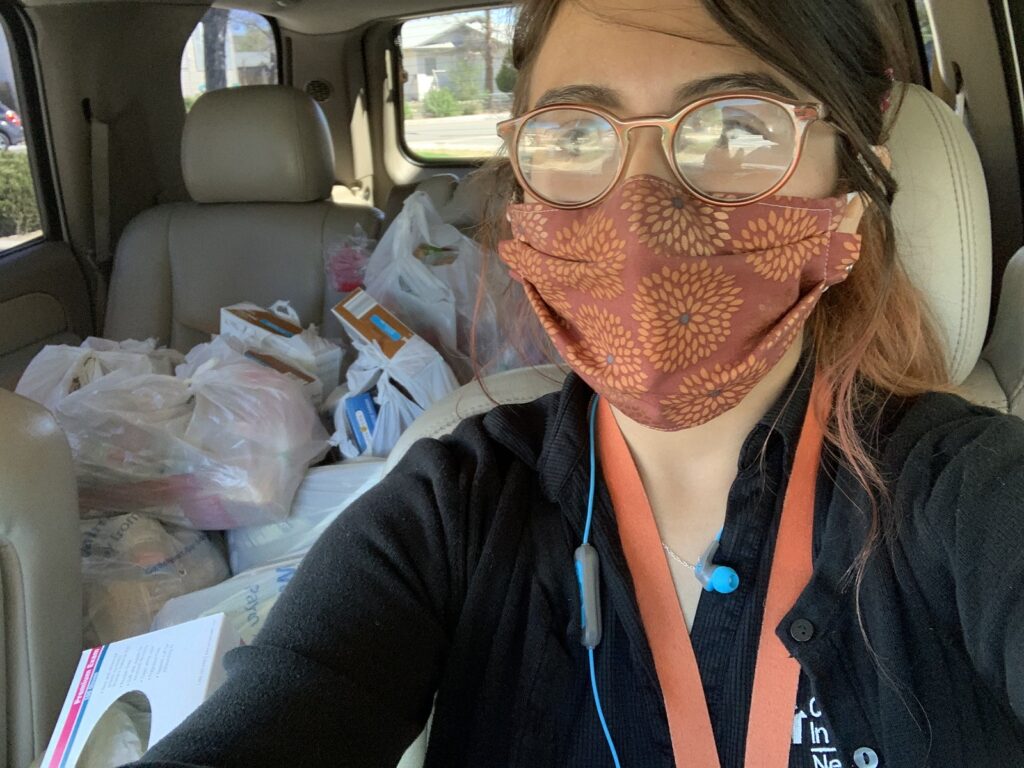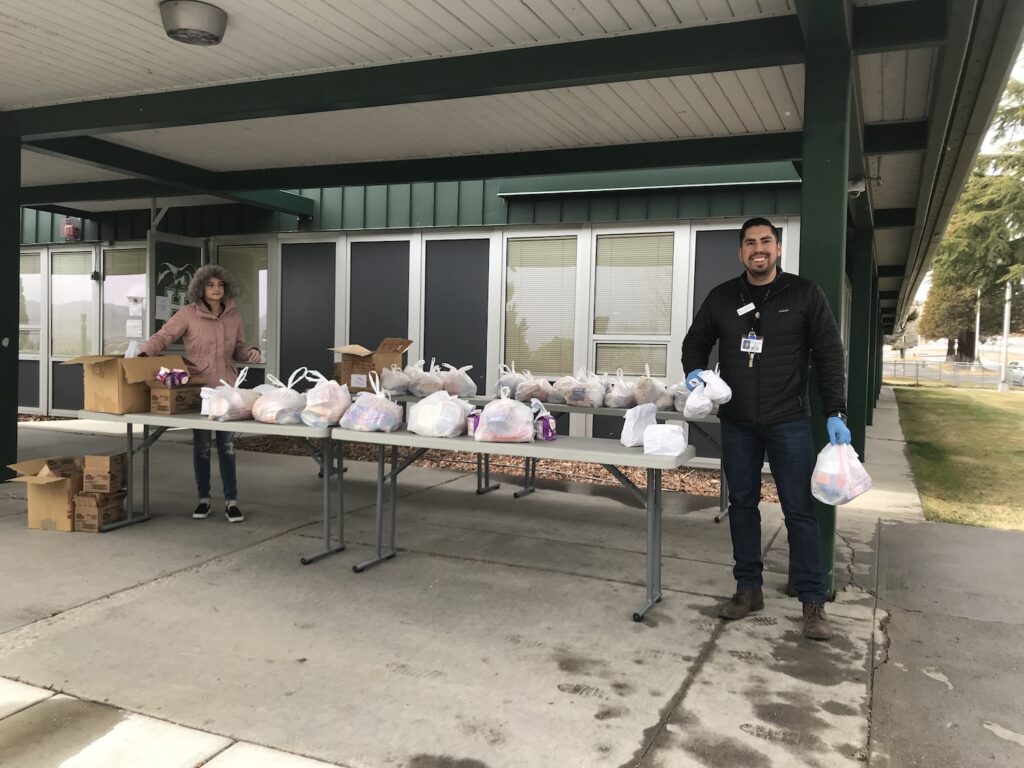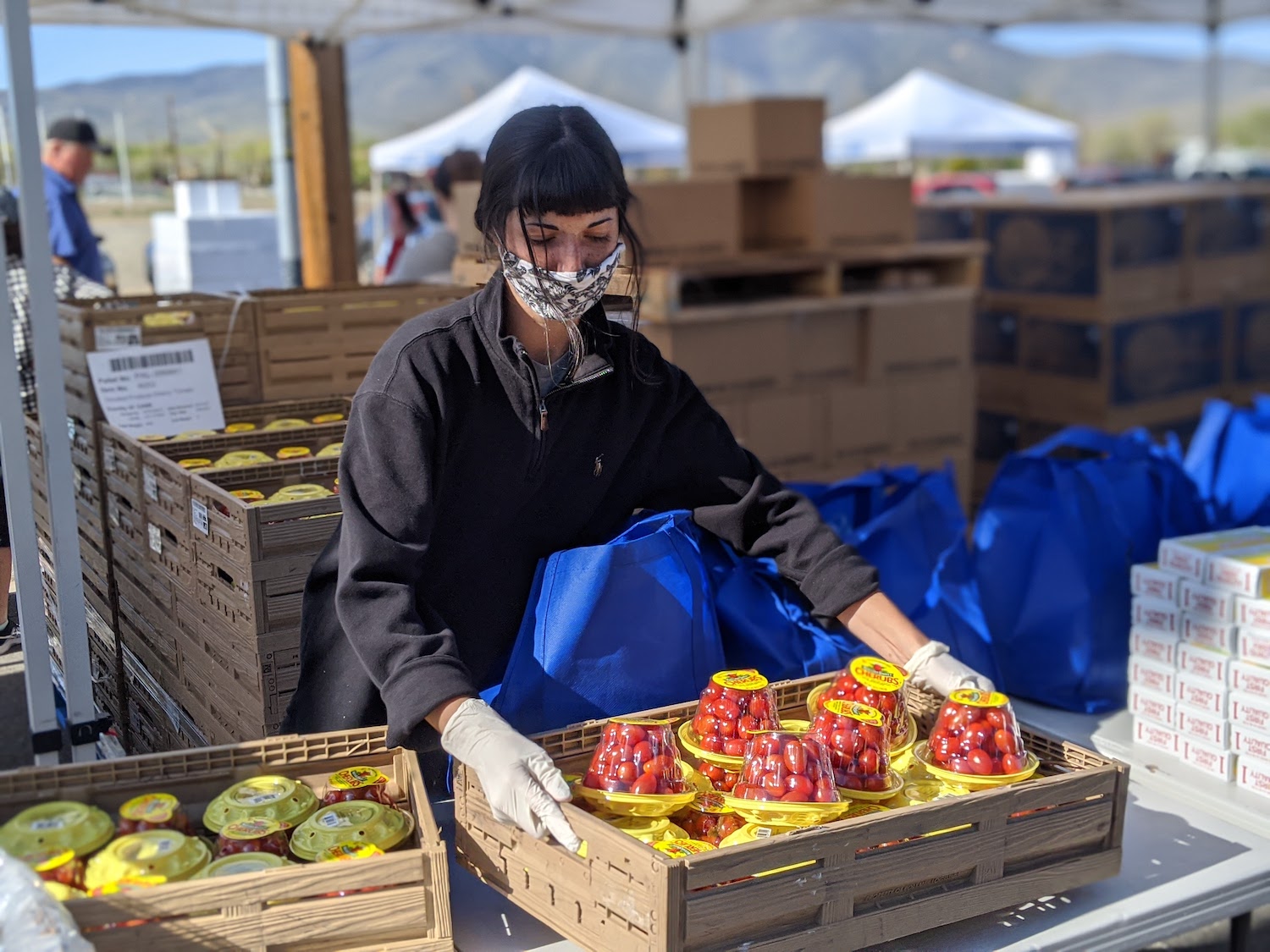Several months into the pandemic, the Food Bank of Northern Nevada is seeing record numbers of people using their food assistance services. With many food pantries housed in schools, food availability over the summer is different than during the rest of the year.
Before the pandemic, the Food Bank of Northern Nevada served about 91,000 people a month. In April, that number jumped to 125,000, more than the organization has ever served before.
“Our largest numbers really that we’ve ever seen in one month were in the month of April. That was unreal,” said Jocelyn Lantrip, a spokesperson for the Food Bank.
In May, demand went down somewhat to 102,000 people overall, which is close to what they saw during the height of the Great Recession.
Statistics for June aren’t available yet, but Lantrip said they are still seeing a noticeable community need. Prior to the COVID-19 pandemic, the Food Bank’s Mobile Harvest program, which provides produce and other fresh food, served an average of 8,900 people a month. In April, that number more than tripled, spiking to 28,000. Demand in May went down slightly, to 21,000 people.
The Food Bank has also had to rethink how to distribute food safely and recently adopted a drive-thru model, which can be difficult to coordinate.
“We are having to find locations that are large enough to have the drive-thru that can accommodate a three-hour distribution,” Lantrip said.
During the summer, the Food Bank has been using school parking lots, since schools are closed, but they regularly change location based on availability. To help people keep track, pickup location schedules are posted in English and Spanish on the “Get Help” section of the Food Bank’s website.
Looking specifically at children in the region, 51 percent of students in the Washoe County School District qualify for free or reduced school lunches.

Credit: Carolina Juárez/Communities In Schools
Communities in Schools is a nonprofit focused on helping children stay in school. The organization runs the food pantries for ten schools in Reno and Sparks, in partnership with the Food Bank.
Carolina Juárez is a bilingual site coordinator at Glenn Duncan Elementary. She tutors students, provides them a supportive presence, and runs the schools’ food pantry, which she’s kept open this summer.
With the pandemic, she also gives out basic necessities, like hygiene products.
“I’m focusing on basic needs. If a student needs, let’s see, a toothbrush, I’m there. If a student needs food for the week, I’m there,” Juárez said. “I did a little bit of this part of my job pre-COVID, but we’re more on emergency mode, definitely.”
She’s providing activities to keep kids busy over the summer as well.
“Today I gave coloring books, along with crayons. During this COVID epidemic, food is a big priority for sure, but then there are other things like social-emotional learning,” Juárez said. “That kind of enrichment, we should also be thinking about, especially during summer.”

Credit: Auburn Harrison/Communities In Schools
Both Communities in Schools and the Food Bank have bilingual staff, like Juárez, available to work with Spanish-speaking families. They also distribute flyers and other information in both English and Spanish.
For food pantries that aren’t staffed by Communities in Schools over the summer, food assistance duties were either transferred to school staff or families were provided with extra food before the break. The organization will resume staffing its school food pantries at the end of the month.
Executive Director Auburn Harrison said her team has also had to restructure their food delivery due to the pandemic.
“We had families that were not only coming down with COVID and not able to leave the home at all, but we also had families that were just really afraid to leave the home,” Harrison said, “or just they had one family member who was going out and getting food. However, everybody in the home had lost their job.”
- Top Republican lawmaker recommends upping state collaboration with ICE
- Hundreds Gathered to Say Goodbye to ‘Chuy’ Gutierrez at the Casino Where He Got His Start
- ‘Chuy’ Gutierrez to be remembered this Cinco de Mayo by the Reno Community at Silver Legacy
- Spanish-language newspaper ceases printing after 45 years, leaving void in Las Vegas
- No, there was no new executive order preventing permanent residents from leaving or entering the U.S. starting mid-March 2025
In light of these circumstances, the organization started delivering food to families’ homes.
Another option for hungry children is the Kids Cafe, run by the Food Bank, which offers free meals after school and during the summer. Lantrip said children used to be required to eat their meal on-site, but the format has changed to a grab-and-go meal pickup model.
While these organizations are adapting in order to distribute food in new ways, Lantrip said that food insecurity isn’t a new problem.
“We’ve had a significant hunger issue in our community for a while, so this really just accelerates something that’s happening already and brings more people into the fold,” Lantrip said.
Looking ahead, the Food Bank is anticipating the number of people needing food to increase in August, as there are unemployment and Supplemental Nutrition Assistance Program benefits, formerly known as food stamps, scheduled to end later this month.
This story was produced in partnership with KUNR Public Radio. The original version of this story was published on July 24.
